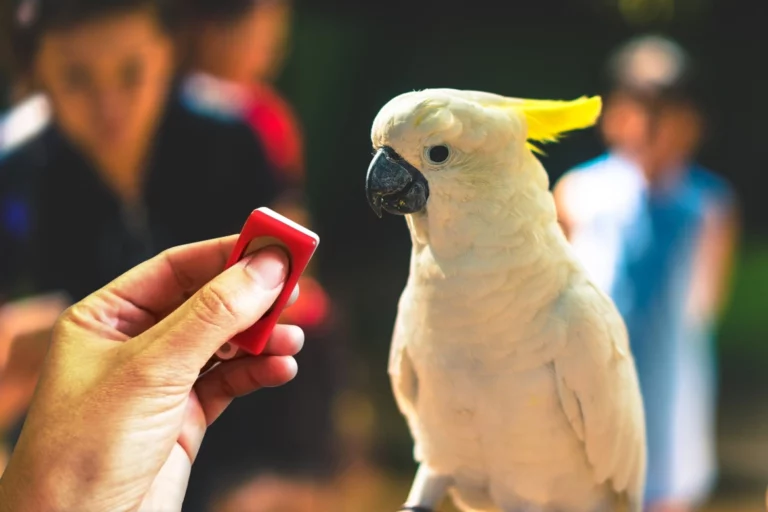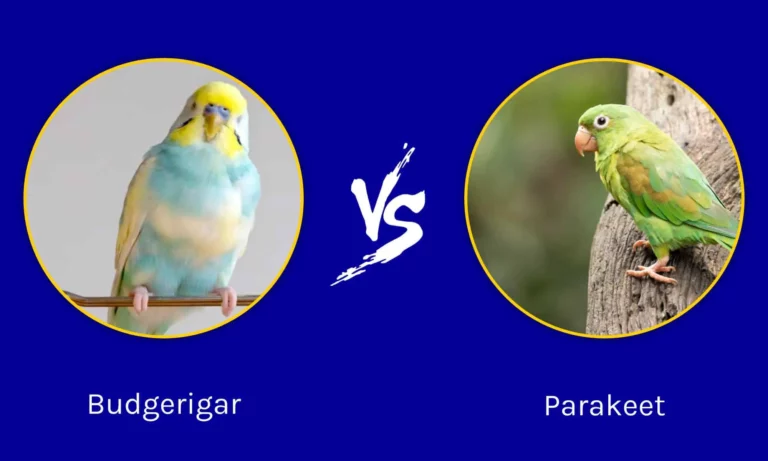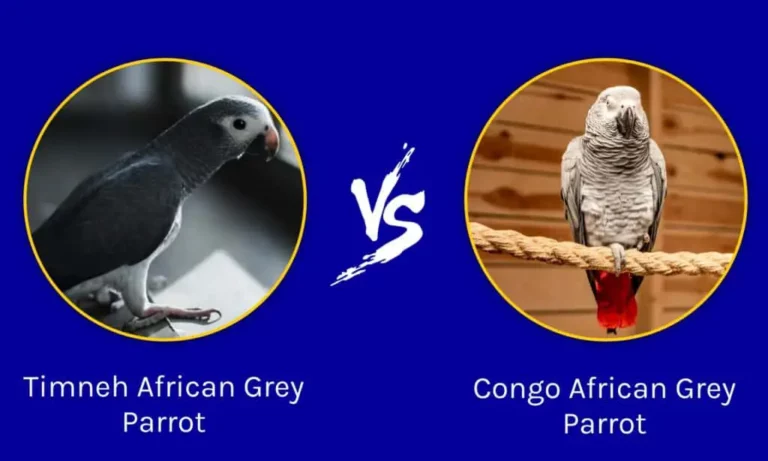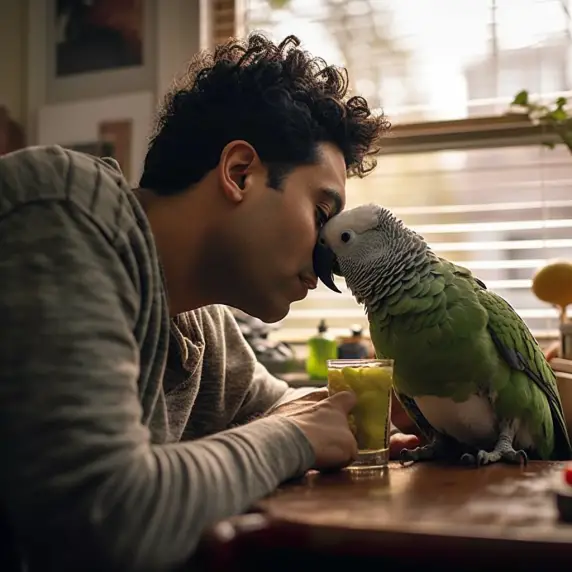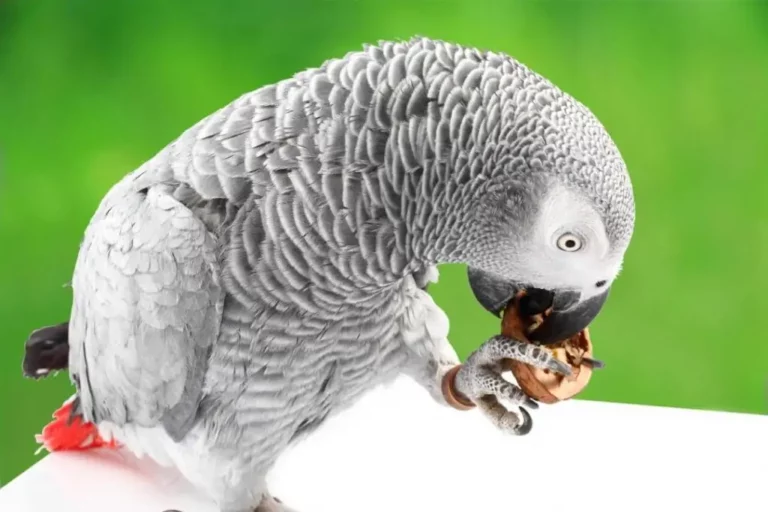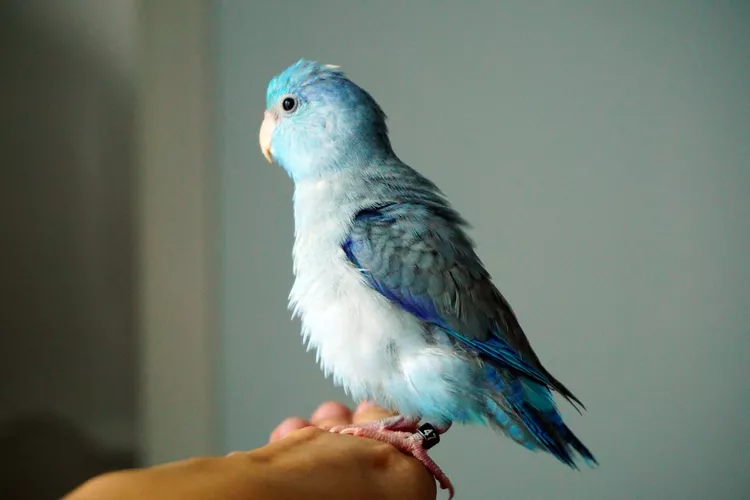Why Do Birds Flap Their Wings in a Cage?
In this blog post, we will discuss various reasons why your bird might be flapping his wings in his cage. By understanding their body language, you can ensure a happier, healthier life for your feathered friend.
Understanding Bird Body Language
Importance of body language in birds
Birds, like other animals, communicate through various means, including body language. Being able to interpret your bird’s body language can help you understand their needs, emotions, and overall well-being. By observing their behavior and reactions to different stimuli, you can create a more comfortable environment for your pet and respond appropriately to their needs.
How to read your bird’s body language
- Posture: A bird’s posture can tell you a lot about how they are feeling. An upright and relaxed posture indicates a content and comfortable bird, while a puffed-up or hunched posture may signal discomfort, fear, or illness.
- Eye pinning: Birds can constrict and dilate their pupils, known as “eye pinning.” This behavior often occurs when a bird is excited, curious, or agitated. Keep an eye on the context and accompanying body language to determine the cause of eye pinning.
- Feather fluffing: Birds fluff their feathers for various reasons, such as preening, adjusting their temperature, or displaying emotions like contentment or agitation. Context is crucial for interpreting this behavior accurately.
- Beak grinding: This is a common behavior in parrots and indicates relaxation and contentment. It typically occurs when the bird is winding down for the night or feeling comfortable in their environment.
- Tail fanning: Fanning of the tail feathers can be a sign of excitement, aggression, or a mating display. Pay attention to the context and other body language cues to understand the meaning behind tail fanning.
- Wing flapping: As the focus of this blog post, wing flapping can have several meanings, from exercise to communication or thermoregulation. Understanding the circumstances surrounding wing flapping will help you decipher your bird’s behavior.
By observing and understanding your bird’s body language, you can create a strong bond with your pet and ensure their happiness and well-being.
Reasons Why Your Bird Flaps His Wings
1. Exercise and stretching
One of the primary reasons birds flap their wings in the cage is to exercise and stretch their muscles. Just like humans, birds need regular physical activity to maintain good health. Flapping their wings provides an opportunity for birds to engage their muscles, especially if they don’t have the chance to fly outside the cage.
2. Excitement and happiness
Birds often flap their wings when they are excited or happy. This could be in response to something positive happening in their environment, such as the arrival of their favorite human or the anticipation of a treat. A bird may also flap its wings as a playful expression or during moments of joy.
3. Mating behavior
In some cases, wing flapping can be a display of mating behavior. Birds may use this action to attract a potential mate or to assert dominance over other birds in the area. This type of wing flapping is usually accompanied by other mating-related behaviors, such as singing, dancing, or feather puffing.
4. Fear or anxiety
Birds might also flap their wings when they feel threatened or anxious. This can be a response to a sudden noise, an unfamiliar person, or even the presence of another pet. If your bird consistently flaps its wings when you approach the cage or during specific situations, it may be expressing fear or anxiety.
5. Thermoregulation
Wing flapping can also serve as a means of thermoregulation. Birds use this behavior to cool down their bodies when they feel too warm. If your bird’s cage is exposed to direct sunlight or high temperatures, they may flap their wings to help regulate their body temperature and maintain a comfortable state.
Understanding the various reasons behind your bird’s wing flapping can help you create a more comfortable environment for your pet and address any potential issues related to their behavior.
Communication Through Wing Flapping
Birds’ vocal and non-vocal communication
Birds are known for their complex and diverse vocalizations, but they also rely on non-vocal communication to express their emotions and interact with their environment. Wing flapping is one such non-vocal communication method that birds use to convey different messages.
How wing flapping can convey a message
- Greeting or acknowledgment: When a bird flaps its wings upon seeing you, it could be a way of greeting you or acknowledging your presence. This behavior shows that your bird recognizes you and is excited about your interaction.
- Seeking attention: Birds may flap their wings to draw your attention, especially if they want something from you, such as food, playtime, or a head scratch. If your bird flaps its wings and looks at you expectantly, it may be trying to communicate its needs.
- Expressing contentment: Wing flapping can be a sign that your bird is content and comfortable in its environment. In this context, the flapping is a way for your bird to communicate its satisfaction with its surroundings and your care.
- Warning signal: Birds may also use wing flapping to warn other birds or animals to stay away or to express discomfort with a situation. If your bird flaps its wings while displaying other signs of agitation, such as puffed feathers or raised head, it might be sending a warning signal.
- Social interaction: Wing flapping can be a part of social interaction among birds. In a multi-bird household or an aviary, you may observe birds flapping their wings to engage with each other, asserting dominance or inviting play.
By paying attention to the context and accompanying body language, you can better understand the message your bird is trying to convey through wing flapping. This understanding can help you build a stronger bond with your feathered friend and respond appropriately to their needs.
Factors That Influence Wing Flapping
Environmental factors
The environment in which your bird lives can play a significant role in their wing flapping behavior. Factors such as noise, lighting, temperature, and the presence of other pets or people can all influence how often and why your bird flaps its wings.
- Noise: Sudden, loud noises or a consistently noisy environment can cause stress and anxiety in birds, leading to increased wing flapping.
- Lighting: Inadequate lighting or exposure to direct sunlight for extended periods can make your bird uncomfortable, potentially resulting in wing flapping as a stress response.
- Temperature: As mentioned earlier, birds may flap their wings to regulate their body temperature. Extreme temperatures, whether too hot or too cold, can lead to increased wing flapping.
- Presence of other pets or people: The presence of other animals, such as cats or dogs, can make birds feel threatened, causing them to flap their wings in fear or anxiety. Similarly, unfamiliar people or a large number of visitors can also trigger wing flapping.
Cage size and setup
The size of your bird’s cage and its setup can greatly impact wing flapping behavior. A small or overcrowded cage may cause your bird to feel stressed or confined, leading to more frequent wing flapping.
- Cage size: A cage that is too small can restrict your bird’s ability to move around, stretch, or exercise, causing them to flap their wings more often to compensate.
- Cage setup: A poorly set up cage with inadequate perches, toys, or hiding spots can create a stressful environment for your bird, leading to increased wing flapping.
Your bird’s temperament
Each bird has its unique personality and temperament, which can affect their wing flapping behavior. Some birds may be naturally more active and prone to wing flapping, while others may be more reserved and flap their wings less frequently.
Understanding the factors that influence your bird’s wing flapping can help you create a more comfortable and supportive environment for your pet, ultimately reducing any stress-related wing flapping and promoting overall well-being.
How to Encourage Healthy Wing Flapping
A healthy amount of wing flapping is essential for your bird’s physical and emotional well-being. Here are some ways you can encourage healthy wing flapping behavior while ensuring your bird’s comfort and happiness.
1. Providing a spacious cage
A large, spacious cage allows your bird to move around freely and engage in wing flapping without feeling confined. Ensure that the cage is appropriately sized for your bird species, providing ample space for them to stretch their wings, climb, and play.
2. Offering enrichment and toys
Toys and other forms of enrichment can keep your bird mentally stimulated and encourage physical activity, including wing flapping. Provide a variety of toys that cater to your bird’s specific interests and needs, such as foraging toys, swings, ladders, and puzzle toys.
Regularly rotate the toys to maintain your bird’s interest and encourage exploration.
3. Regular exercise outside the cage
Allowing your bird to exercise outside the cage under supervision can significantly benefit their physical and emotional health. Create a safe, bird-friendly space where your pet can explore, fly, and engage in wing flapping without any restrictions.
Regular out-of-cage exercise can help reduce stress and encourage healthy wing flapping behavior.
4. Positive reinforcement
Using positive reinforcement techniques can help encourage healthy wing flapping behavior while strengthening the bond between you and your bird. Reward your bird with praise, treats, or gentle scratches when they engage in wing flapping during appropriate situations, such as exercise or playtime.
By creating a supportive and engaging environment for your bird, you can encourage healthy wing flapping behavior that contributes to their overall well-being. Always pay attention to your bird’s individual needs and preferences to ensure their comfort and happiness.
When to Be Concerned About Wing Flapping
While wing flapping is generally a healthy and normal behavior for birds, there are instances where it may be a cause for concern. Knowing when to consult a veterinarian or take action can help you address any potential issues promptly.
Excessive or repetitive wing flapping
If your bird is flapping its wings excessively or repetitively without any apparent reason, it could be a sign of stress, anxiety, or an underlying health issue. In such cases, it’s essential to assess your bird’s environment, as well as their overall behavior and physical condition, to determine the cause.
Potential health issues
Wing flapping can sometimes be an indicator of health problems. If your bird displays any additional signs of illness, such as lethargy, loss of appetite, changes in droppings, or difficulty breathing, consult your veterinarian immediately.
Some health issues that may cause abnormal wing flapping behavior include:
- Respiratory infections: Difficulty breathing can lead to increased wing flapping as your bird tries to get more air.
- Wing or feather injuries: Injuries to the wings or feathers can cause discomfort, leading to excessive or awkward wing flapping.
- Nutritional deficiencies: A lack of essential nutrients in your bird’s diet can result in muscle weakness or other health issues, which may manifest as abnormal wing flapping.
Consulting a veterinarian
If you have any concerns about your bird’s wing flapping behavior or overall health, it’s always best to consult a veterinarian, preferably one with experience in avian medicine. They can help identify any underlying issues and provide appropriate treatment or recommendations to ensure your bird’s well-being.
By being attentive to your bird’s wing flapping behavior and knowing when to seek professional help, you can ensure the health and happiness of your feathered friend.
Frequently Asked Questions
How can I tell if my bird’s wing flapping is a sign of distress or illness?
Monitor your bird’s overall behavior and physical condition. If you notice any changes in appetite, energy levels, or appearance, or if the wing flapping seems excessive, consult your veterinarian.
Is it normal for my bird to flap his wings even if he has enough space in his cage?
Yes, occasional wing flapping can be a normal part of a bird’s behavior, even if they have plenty of space. They may still need to stretch their wings or engage in play.
My bird flaps his wings every time I approach the cage. Is this a sign of fear?
It could be a sign of fear or excitement. Observe your bird’s overall behavior and body language to determine the underlying cause. If your bird appears stressed or anxious, try to approach the cage more slowly and calmly to help them feel at ease.
Should I trim my bird’s wings to prevent them from flapping excessively?
Trimming a bird’s wings should only be done for safety reasons and not to prevent wing flapping. Consult your veterinarian before attempting any wing trimming, as improper trimming can cause physical harm and emotional stress to your bird.
Conclusion
Understanding why your bird flaps his wings in his cage can help you better care for your pet and ensure their overall well-being. By paying attention to their body language, you can create a more comfortable environment for your feathered friend.

